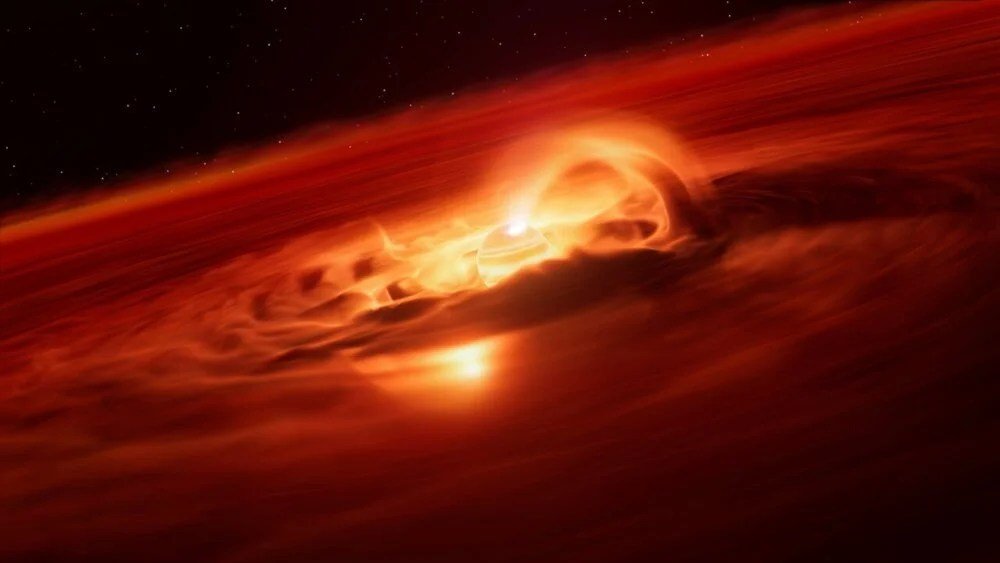
بتوقيت بيروت — The most “insatiable” planet in the universe is open: Video
Astronomers discovered an unusual planet, the CHA 1107-7626, which absorbs gas and dust with incredible speed. Fasting planets, unlike the usual worlds of the solar system, do not rotate around the starsand drift freely in space, which makes their study complex. The observation results are published in Astrophysical Journal Letters.
“People can think about planets as quiet and stable worlds, but with this discovery we see that freely drifting objects of planetary mass can be unusually dynamic,” says Viktor Alendros-Abad, an astronomical observatory of Palermo (Inap, Italy) and the leading author of the study.
Incredibly rapid growth
Cha 1107-7626 is located approximately in 620 light years From us in the constellation Chameleon. The mass of the planet is estimated 5-10 times more than the mass of Jupiter. She continues to form, actively absorbing the material from the surrounding disc in a process known as Accreditation. This process is characteristic of young stars: gas and dust gradually fall on the central object, increasing its mass. The speed of absorption of the substance by the planet is six billion tons per second – a record for any famous planets.
Researchers noted that the accretion rate of the planet is unstable and can increase sharply. By August 2025, the growth rate of the planet was eight times higherthan a few months ago.
“This is the most powerful episode of accretion ever registered for the planetary mass object,” Alendros-Abad emphasized.
For observations, the team used “Very large ESO telescope “ (VLT) in Chile and the X-Shooter spectrograph, as well as data from the James Webb space telescope and Sinfoni archival observations. These tools made it possible to study in detail how gas and dust fall on the planet, and fix chemical changes in the surrounding disk. In particular, during the period of intensive accretion, water vapor was observed, which was previously recorded only in stars.
“The origin of the storm planets remains a mystery: they are either formed as small stars, or were once thrown out of their systems,” says Alex Scholz, a co-author of research from the University of St. Andrews (Great Britain).
The results show that at least some of these planets are formed like stars, and the processes of accretion are similar in that they are observed in young luminaries.
“This discovery erases the line between stars and planets and allows you to look into the early stages of the formation of planets,” adds Belinda Damian, also the co-author of the study.
Why this happens
Scientists suggest that Strong magnetic fields The planets direct gas and dust to its surface, as happens in young stars. Even objects with a small mass are able to create magnetic fields that enhance accretion, and the structure of the disk changes during a “nutritious surge”.
Free-free planets are difficult to detect due to their low brightness.
“The idea that the planetary object can behave like a star is impressive and makes you think about what worlds can be in the early stages of its existence,” says Amelia Bayo, co -author of the study and ESO astronomer.
Subscribe and read “Science” in
Telegram
Disclaimer: This news article has been republished exactly as it appeared on its original source, without any modification.
We do not take any responsibility for its content, which remains solely the responsibility of the original publisher.
Disclaimer: This news article has been republished exactly as it appeared on its original source, without any modification.
We do not take any responsibility for its content, which remains solely the responsibility of the original publisher.
Author: arabsongmedia.net
Published on: 2025-10-03 01:13:00
Source: uaetodaynews.com
